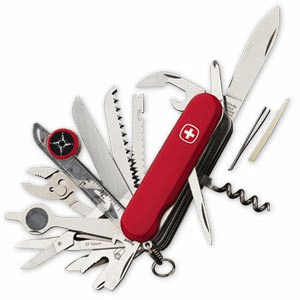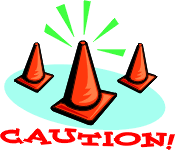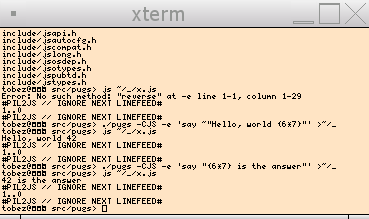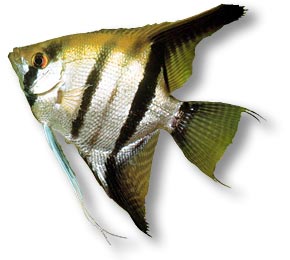Perl6
Anton Berezin
tobez@tobez.org


About
This talk is about
- Perl6, the language
- Parrot, an interpreting engine
- Pugs, an implementation

Perl6, the language
Perl 6 is the next version of the Perl programming language.

Why Perl5 is not good enough
The internals of the version 5 interpreter are so tangled that they hinder maintenance, thwart some new feature efforts, and scare off potential internals hackers.
The language as of version 5 has some misfeatures that are a hassle to ongoing maintenance of the interpreter and of programs written in Perl.

Perl6 design
Damian Conway:
The Perl 6 design process is about keeping what works in Perl 5, fixing what doesn't, and adding what's missing.

Perl6 vision
The vision for Perl 6 is more than simply a rewrite of Perl 5. By separating the parsing from the compilation and the runtime, we're opening the doors for multiple languages to cooperate.

Perl6 vision
You'll be able to write your program in Perl 6, Perl 5, TCL, Python, or any other language that there's a parser written for.
Interchangable runtime engines let you interpret your bytecode or convert it to something else.

Community participation
Larry Wall:
Perl 5 was my rewrite of Perl. I want Perl 6 to be the community's rewrite of Perl and of the community.

Requests for Change
In the beginning, there were RFCs.
The initial design phase of perl6 was to produce suggestions for Larry to evaluate.
Every idea that someone wants in Perl should have had an RFC produced for it.

RFCs
The community brainstorming process finished
August 1, 2000,
resulting in 361 RFCs.
If you ask for RFCs from the general public, you get a lot of interesting but contradictory ideas, because people tend to stake out polar positions, and none of the ideas can build on each other.
Language needs a designer


Apocalypses
Apocalypses are initial design document written over time by Larry. Nowadays they are largely replaced with Synopses.

Exegeses
Exegeses were written by Damian Conway and were explaining Apocalypses in more detail and with more examples. Nowadays they are also largely replaced with Synopses.

Synopses
Synopses are short, up to the point Perl6 design documents. They are kept current, so if an Apocalypse or an Exegesis disagrees with a Synopsis, the Synopsis wins.

Multi-purpose
Perl6 is supposed to be good for
- Quick-n-dirty programming
(one-liners) - Large software projects

Compatibility
Perl6 will be able to execute Perl5
code. In fact, the interpreter will
assume that it is being fed Perl 5
code unless specified otherwise.

Compatibility
This gives us the access to the wealth of CPAN.
10+ years
2800+ authors
10000+ modules

Huffman coding
Perl5's $o->method becomes $o.method
Since "." is occupied, "~" becomes string concatenation operator.

Huffman coding
Perl5's $d = $a ? $b : $c becomes
$d = $a ?? $b :: $c
Which frees up "?" and ":".

Colon
Larry's First Law of
Language Redesign:
Everyone wants the colon.

OO or not?
If you want to treat everything as
objects in Perl 6, Perl will help
you do that. If you don't want to
treat everything as objects, Perl
will help you with that viewpoint as well.

Various Perl5 modules emulating Perl6
You can try those:Perl6-Attributes Perl6-Bible Perl6-Binding Perl6-Builtins Perl6-Classes Perl6-Contexts Perl6-Currying Perl6-Export Perl6-Export-Attrs Perl6-Form Perl6-Gather Perl6-Interpolators Perl6-Junction Perl6-Parameters Perl6-Placeholders Perl6-Roles Perl6-Rules Perl6-Say Perl6-Slurp Perl6-Subs Perl6-Tokener Perl6-Variables

Parrot
Parrot is a virtual machine designed to
efficiently compile and execute bytecode
for interpreted languages. Parrot will be
the target for the final Perl 6 compiler, and is already usable as a backend for Pugs, as well as variety of other languages.

Parrot
In other words, parrot is a- dynamic
- object-oriented
- assembly language
- with closures,
- coroutines
- and automatic GC
Just to give you an idea.

Target languages
Amber for parrot BASIC/compiler
BASIC/interpreter bc befunge bf Cardinal Cola Common Lisp conversion forth Jako lazy-k Lua Monkey Parrot m4 miniperl Ook OpenComal Parakeet parrot_compiler Pint Pugs Punie Python regex Ruby Span Scheme Tcl unlamba URM YAL Zcode
Degree of completeness vary. To say the least.

Performance
Parrot has several different
"runcores",
including JIT
for some platforms.
Some of the runcores are fast.

Benchmarks
Straightforward calculation of prime numbersup to 50000:
- primes.c, -O2: 1.4 s
- primes_i.pasm, JIT: 1.6 s
- primes2.c, -O2: 20 s
- primes.pasm, JIT: 32 s
- primes.pl, perl 5.8.7: 177 s
- primes2.py, python 2.4: 362 s
- primes2.pasm, JIT: 377 s
- primes2.pl, perl 5.8.7: 556 s
- primes2.rb, ruby 1.8: 703 s

A note of caution
The results of those benchmarks should
be interpreted with care.
But there is a hope for Parrot.

Pugs
Pugs is an implementation of Perl 6,written in Haskell. It aims to implement
the full Perl6 specification,
as detailed in the Synopses.
Started in February 2005.

Haskell
Haskell is a standardized, purely functionalprogramming language with built-in lazy
evaluation capabilities. While there are
several different implementations available,
currently Pugs needs to be built with GHC,
because it uses several GHC-specific features.
GHC is a state-of-the-art compiler and interactive environment, available under a BSD-style license. Itself written in Haskell, GHC can compile Haskell to bytecode, C code, and machine code on some platforms.

Speed
The parser part of Pugs is very fast,due to its robust underpinning in Parsec.
However, the Pugs evaluator is currently
not optimized at all: dispatching is around
1000 operators per second on a typical PC, which is nearly 100 times
slower than Perl 5. Still, it is fast enough for prototyping language features.

Short history
Started in February 2005 by Autrijus Tang(now Audrey Tang).
- Feb 1st start of the exercise
- Feb 6th primitive interpreter
- Feb 16th imperative runtime
- Feb 23rd Test.pm runs
- Mar 19th PCRE support
- Apr 26th BEGIN blocks
- May 25th Embedded Perl5/Parrot

Short history
- Jun 24th Perl6 -> PIL -> Parrot
- Jul 14th PIL -> Perl5
- Jul 17th PIL -> JS
(make smoke-js 90% pass) - Aug 1st Self-hosting object model
- Sep 21st Blondie type inferencer

Short history
-OfunAnarchistic development model
~9000 commits
120+ committers

Feature line
- 6.0 initial
- 6.2 functions
- 6.28 objects
- 6.283 grammars
- 6.2831 types
- 6.28318 macros
- 6.283185 self-hosting

Can use Perl5 and JS libraries
use perl5:DBI;
use jsan:DOM;
Javascript backend demo

Select language features


Everything is an object
say "Hello, world".reverse;
say 3.as("%03d");
say <a b c>.elems;

Scalar context(s)
Unary ~ now imposes a string context onits argument, and + imposes a numeric
context (as opposed to being a no-op in
Perl 5). Along the same lines, ? imposes
a boolean context, and * imposes a list
context.
Perl5:
$len = scalar(@a);
$str = "@a";
Perl6:
$len = +@a;
$str = ~@a;
Hyper operators
>> and << are used to denote "list operations", which operate on each element of two lists (or arrays) and return a list (or array) of the results.
(1,1,2,3,5) >>+<< (1,2,3,5,8); # (2,3,5,8,13)
Hyper operators
Also unary:
@negatives = -<< @positives;
Reduction operators
Any binary operator can be surrounded by square brackets to create a list operator that reduces using that operation:
[+] 1, 2, 3; # 1 + 2 + 3 = 6
Smart match
~~ replaces =~, but is much more general. A few examples:
$s ~~ /re/ just like Perl5's $s =~ /re/
%h1 ~~ %h2 match if %h1.keys.sort eq %h2.keys.sort
%h ~~ @a match if %h{any(@a)}
@a ~~ "str" match if any(@a) eq "str";
Switch statement
given EXPR {
when EXPR { ... }
when EXPR { ... }
default { ... }
}
"given" is just one of the ways to set topic ($_).
"when" does smartmatching of the $_ with EXPR.
Exception handling
Exceptions are ignored:
try {
...
}
try {
...
CATCH {
when ... {...}
...
}
}
Exception handling
"try" is actually redundant, any block can have CATCH:
{
...
CATCH {
when ... {...}
...
}
}

Rules
The following elements are the same
as in Perl5 regexes:
- Capturing: (...)
- Repeaters: *, +, ?
- Alternatives: |
- Escaping: \
- Non-gready matches: *?, +?

Rules
- /x is the default
- # always introduces comment
- /m is gone, use $$ and ^^ instead
- /s is gone, use . for "anything"
- /s is gone, use \N for "anything except newline"

Rules
- [...] is not a character class
- use [...] instead of (?:...)
- {...} is not a repetition quantifier
- {...} delimits an embedded closure

Rules
- Variables don't interpolate
- / $var / is like /\Q$var\E/ in Perl5
- / @a / is like
/ [ @a[0] | @a[1] | ... ] / - {...} delimits an embedded closure

Extensible metasyntax
- rule ident { [ <alpha> | _ ] \w* }
- / <ident> = <ident> /
- a number of <...> is predefined

Named captures access
if / <ident> = <ident> / {
$left_side = $<ident>[0];
$right_side = $<ident>[1];
}

Junctions
|, &, and ^ are no longer bitwise operatorsbut now serve a much higher cause:
they are now the junction constructors.
A junction is a single value that is equivalent
to multiple values.
This allows one to write things like:
my $a = 4;
if $a < 3|4|5 { say "less" }
if $a > 3|4|5 { say "greater" }
Junctions demo


Junctions
Junctions thread through operations,
returning another junction:
(1|2|3) + 4; # 5|6|7
(1|2) + (3&4); # (4|5) & (5|6)
Chained comparisons
One can now write:
if $x1 <= $x <= $x2 { say "in range" }
Binding (aliasing)
Perl5:
$x = "Hello";
*y = *x;
$y = "Bye!";
print "$x\n";
Perl6:
our $x = "Hello";
our $y := $x;
$y = "Bye!";
say $x;

Arguments and formal parameters
Proper parameter lists:
sub fact ($n)
{
return 1 if $n < 2;
return $n*fact($n - 1);
}
say fact(5);
Factorial demo


Arguments and formal parameters
Also named:
sub my_substr ($str, $from?, $len?)
{
substr($str, $from||0, $len||Inf)
}
say my_substr("hello", len => 4);

Arguments and formal parameters
Also with default values:
sub my_substr ($str, $from = 0, $len = Inf)
{
substr($str, $from, $len)
}
say my_substr("hello", from => 2);

Pointy subs
Almost a synonym for the anonymous sub
(parameter list does not require
parentheses):
$sq = -> $val { $val**2 };
# Same as: $sq = sub ($val) { $val**2 };
for @list -> $elem {
print "$elem\n";
}
# Same as: for @list, sub ($elem) {
# print "$elem\n";
# }

Pointy subs
But behaves like a block:
for @list -> $elem {
print "$elem\n";
return if $elem ~~ /done/;
}
# for @list, sub ($elem) {
# print "$elem\n";
# return if $elem ~~ /done/; # OOPS
# }

Zip
In order to support parallel iteration overmultiple arrays, Perl 6 has a zip function
that builds tuples of the elements of two or
more arrays.
for zip(@names; @codes) -> [$name, $zip]
{
print "Name: $name; Zip code: $zip\n";
}

Each
Or use each if you want flat list as opposed to tuples:
for each(@names; @codes) -> $name, $zip
{
print "Name: $name; Zip code: $zip\n";
}

Placeholder arguments
Standard sub declaration:
$func = sub ($a, $b) { print if $a eq $b };
$func = -> $a, $b { print if $a eq $b };
$func = { print if $^a eq $^b }
Sorted!

Pipes
grep { $_ % 2 } @data;
grep { $_ % 2 } <== @data;
@data ==> grep { $_ % 2 };

Pipes
@oddsquares = map { $_**2 },
sort grep { $_ % 2 }, @nums;
# more clearly written as...
@oddsquares = map { $_**2 } <==
sort <==
grep { $_ % 2 } <== @nums;
@oddsquares = (@nums ==> grep { $_ % 2 } ==>
sort ==> map { $_**2 });

Pipes
# push semantics
my @foo;
0..2 ==> @foo;
'a'..'c' ==> @foo;
say @foo; # 0,1,2,'a','b','c'

Introspection
Every class object has a .meta
method that lets you get at
the class's metaclass object,
which lets you get at all
the metadata properties for
the class.
Perspective

Questions

Resources

http://dev.perl.org/
http://www.parrotcode.org/
http://www.pugscode.org/
The End

Thank you!